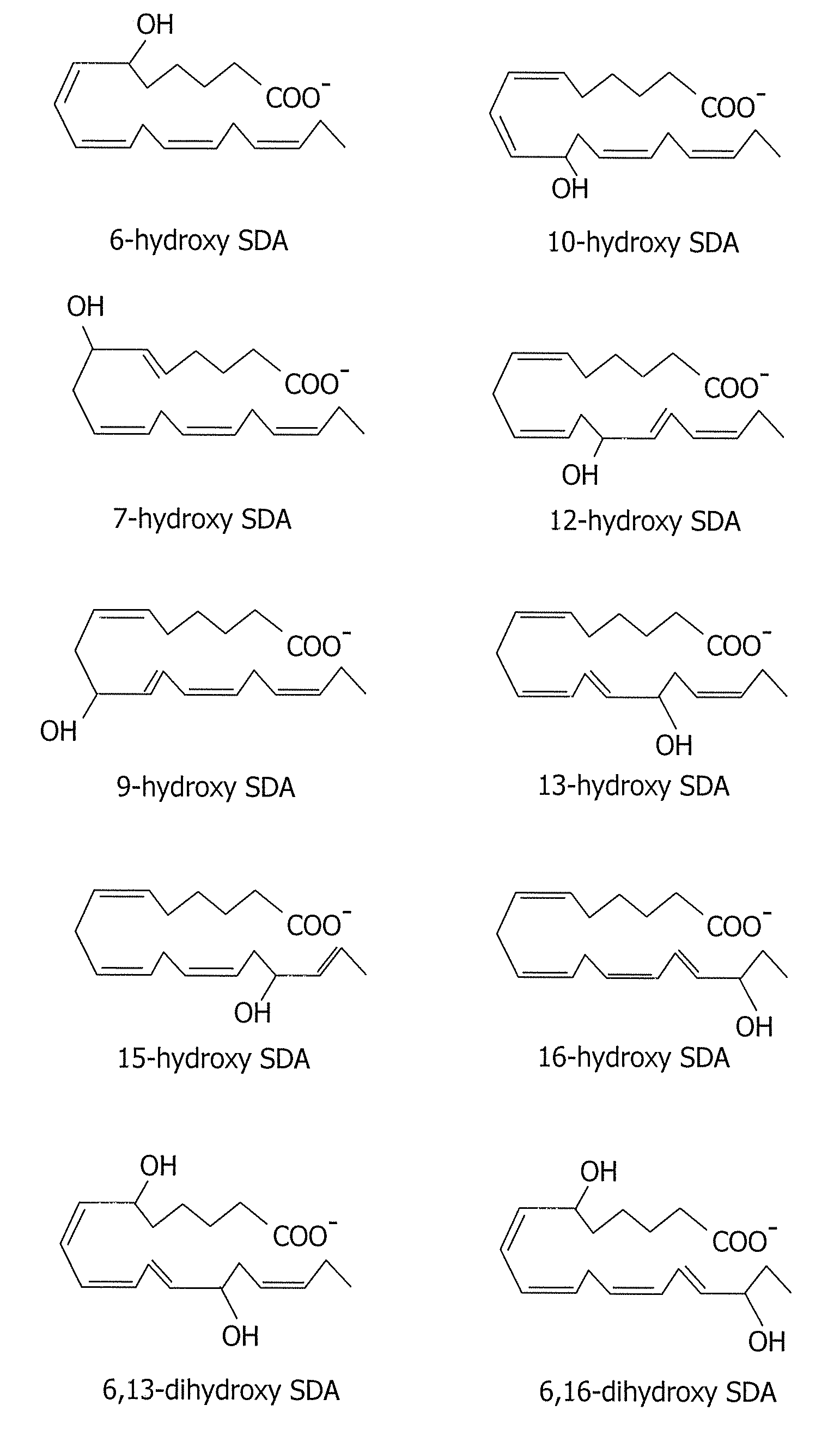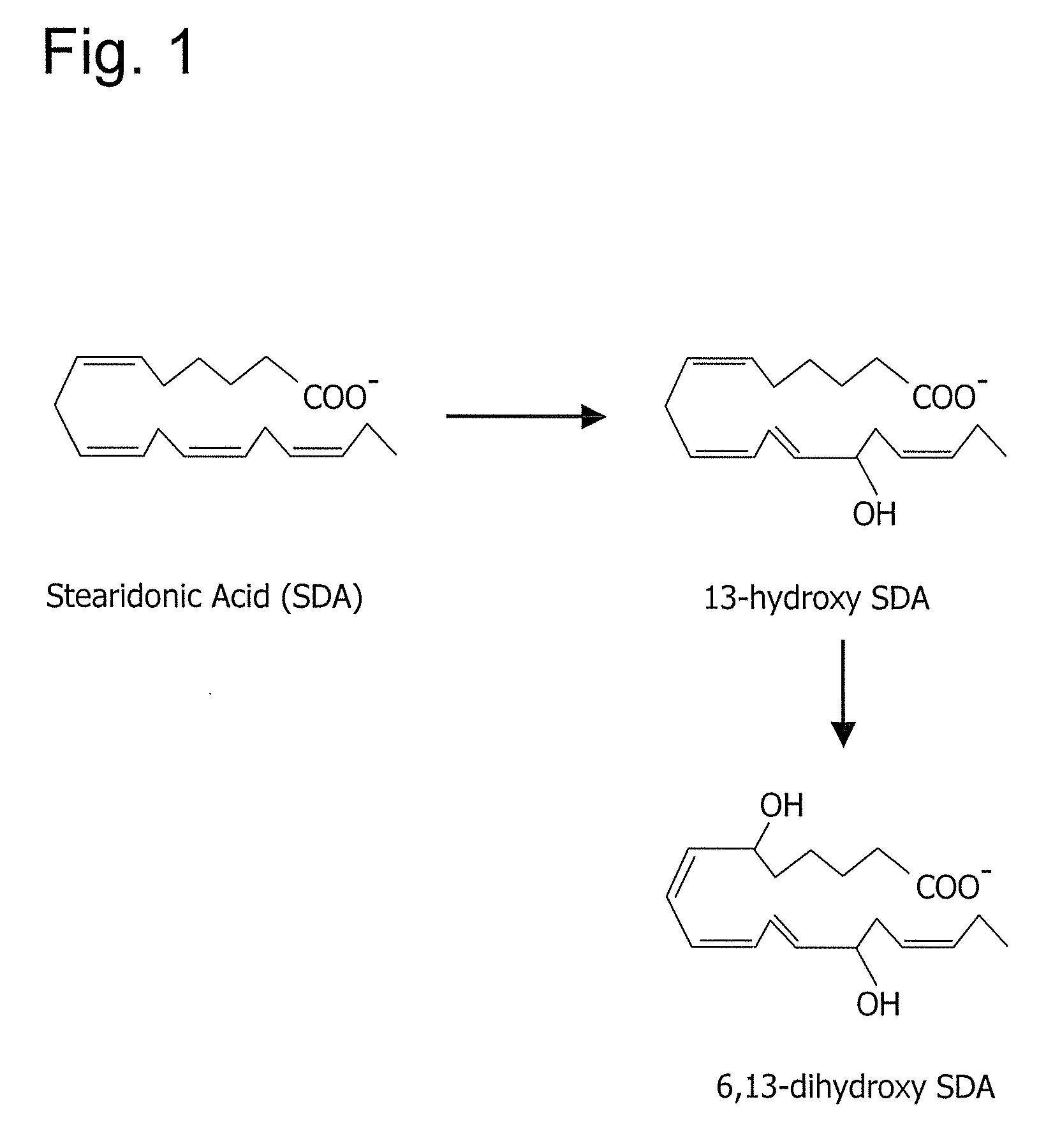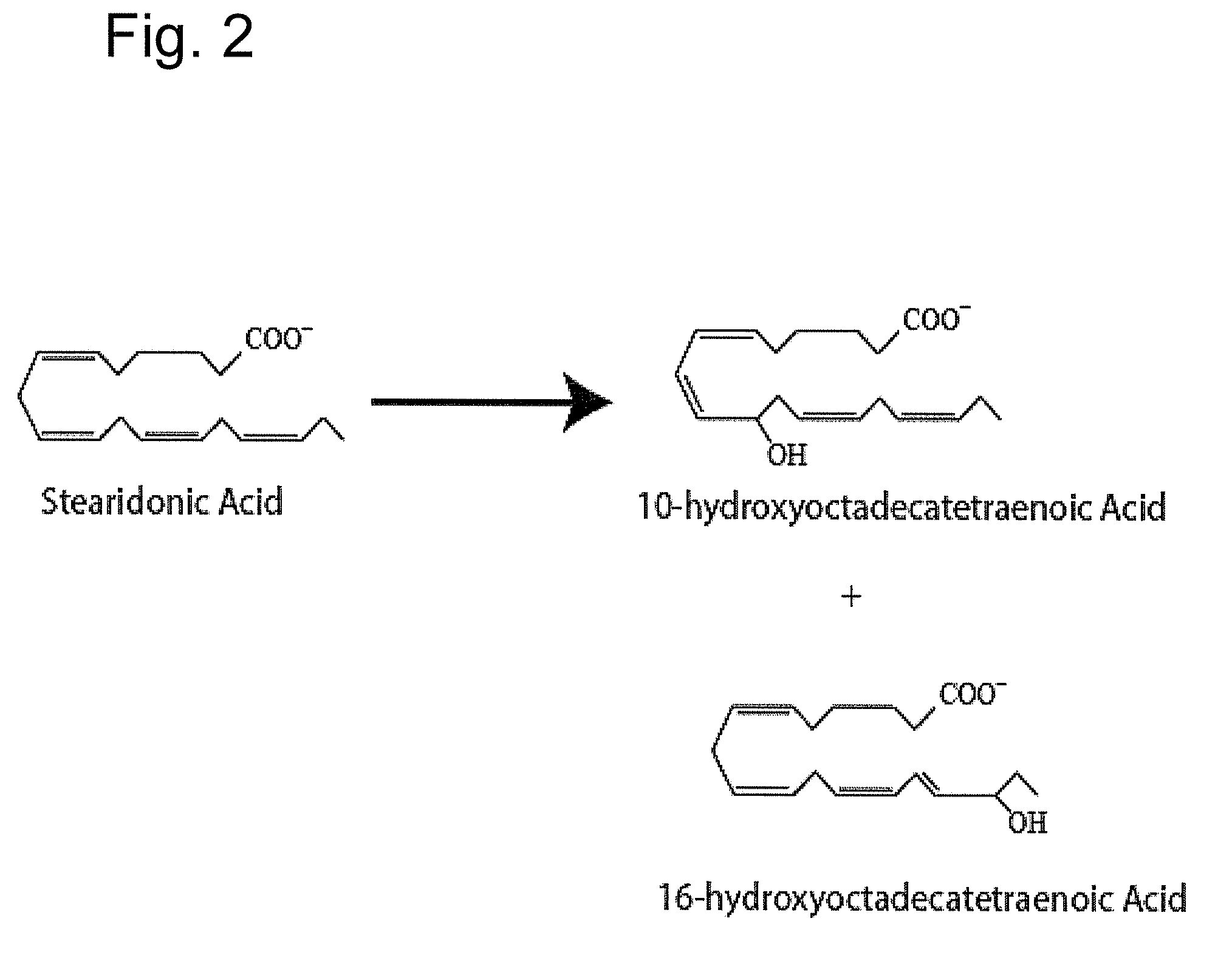Oxylipins from stearidonic acid and gamma-linolenic acid and methods of making and using the same
a technology of stearidonic acid and gamma-linolenic acid, which is applied in the field of making and using the same, can solve the problems of toxic addition of free fatty acids to the cultures, poor production of seaweed biomass in these cultures, etc., and achieve the effects of reducing at least one symptom of inflammation or neurodegeneration, preventing or and reducing at least one symptom of inflammation
- Summary
- Abstract
- Description
- Claims
- Application Information
AI Technical Summary
Benefits of technology
Problems solved by technology
Method used
Image
Examples
example 1
[0160]The following example demonstrates that stearidonic acid (SDA) can be completely converted to a mono-hydroxy and di-hydroxy derivative by 15-lipoxygenase.
[0161]FIG. 1 illustrates the major 15-lipoxygenase products of stearidonic acid (SDA, 18:4n-3). In this experiment, SDA (100 μM, NuChek Prep, Elysian, Minn.) was incubated with soybean 15-lipoxygenase (10 μg / ml, Sigma-Aldrich, St. Louis, Mo.) in 0.05M sodium borate buffer, pH 9.0, at 4° C. with vigorous stirring for 30 min. Reaction products were reduced with NaBH4 (0.45 mg / ml) and then extracted on a solid phase C-18 cartridge (Supelco Discovery DSC-19) using anhydrous ethanol for elution. Reaction products were identified by LC / MS using an Agilent 1100 Series high performance liquid chromatograph (HPLC) interfaced with mass spectrometry detector. The HPLC was carried out on a Prodigy C18(2) column (250×4.6 mm, 5 micron, Phenomenex, Torrance Calif., USA) using a mobile phase consisting of 100 mM ammonium acetate in 30% metha...
example 2
[0163]The following example indicates the major 12-lipoxygenase products of SDA
[0164]SDA (30 μg / ml), Nu-Chek Prep (Elysian, Minn.) was incubated at room temperature (˜23° C.) with 76 U of porcine 12-LOX (Cayman Chemical, Ann Arbor, Mich.)) in 0.1M TRIS-HCL, pH 7.5, 50 mM EDTA, 0.1% Tween 20 with vigorous stirring for 30 min. Reaction products were reduced with NaBH4 (0.45 mg / ml), and the reaction product was then extracted on a solid phase C-18 cartridge (Supelco Discovery DSC-19) using anhydrous methanol for elution. The reaction mixture was analyzed by UV-VIS spectrophotometry and products of the reaction were further characterized using LC-MS-DAD, as described in Example 1. FIG. 2 depicts the structures of the major monohydroxy products of this SDA reaction.
example 3
[0165]The following example indicates the major 5 lipoxygenase product of SDA.
[0166]To a 5 ml reaction mixture containing 200 μM SDA (Cayman Chemical, Ann Arbor, Mich.), in 0.1 M phosphate buffer, pH 6.3, and 5 mM EDTA, was added 420U of potato 5-lipoxygenase (5LOX) (Cayman Chemical (Ann Arbor, Mich.). The reaction mixture was stirred for 30 minutes at room temperature (˜23° C.) and reaction products were reduced by addition of 1 ml of 0.5 mg / ml NaBH4 (5 mg / ml in 1 M NaOH). The reaction was subsequently acidified with acetic acid and the products extracted using a solid phase C18 SPE cartridge and eluted with methanol. Reaction products were extracted using a solid phase C18 SPE cartridge and eluted with methanol. The reaction mixture was analyzed by UV-VIS spectrophotometry and products of the reaction were further characterized using LC-MS-DAD, as described in Example 1. The major reaction products are depicted in FIG. 3.
PUM
| Property | Measurement | Unit |
|---|---|---|
| Mass | aaaaa | aaaaa |
| Acidity | aaaaa | aaaaa |
Abstract
Description
Claims
Application Information
 Login to View More
Login to View More - R&D
- Intellectual Property
- Life Sciences
- Materials
- Tech Scout
- Unparalleled Data Quality
- Higher Quality Content
- 60% Fewer Hallucinations
Browse by: Latest US Patents, China's latest patents, Technical Efficacy Thesaurus, Application Domain, Technology Topic, Popular Technical Reports.
© 2025 PatSnap. All rights reserved.Legal|Privacy policy|Modern Slavery Act Transparency Statement|Sitemap|About US| Contact US: help@patsnap.com



